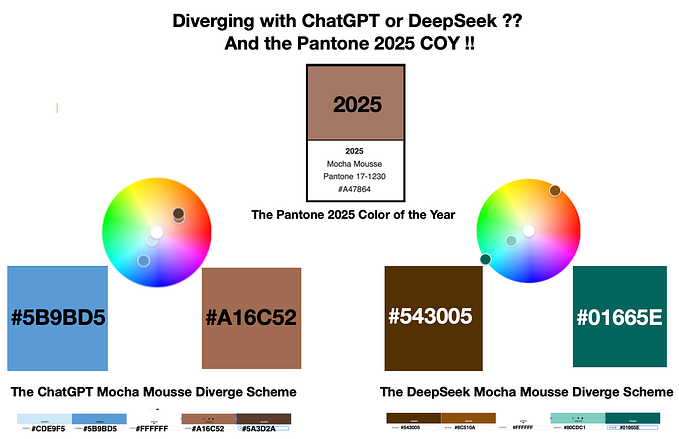Member-only story
When brown becomes a shade of orange in data visualization
Using the color Brown to create sequential and diverging color schemes.

This writing explores how to use the color of Brown in your data visualizations. One of the mysteries of Brown is that it is really a shade of Orange. I discuss how this can be true and how to work with Brown to create sequential and diverging color schemes for visualizing data. Let’s get started by examining how Brown could be a shade of Orange.
Using the Adobe Capture App to explore Brown:
As noted in one of my previous writings on color, Adobe Capture is a free mobile app that detects colors from images. It is available for iOS and Android devices. Below, I show Adobe Capture in action, using images from my iPhone camera roll. I have focused on a scene from one of my daily walks that includes foliage of many Brown colors. Even in the summer, it is amazing to discover how Brown surrounds us.

If I select the Brown color on the far right of the initial color scheme, I am provided with the color’s Hex code, (#735449) under the Swatches option. I can also ask to view color harmonies. I show these results below.

For those unfamiliar with the concept, my Brown color is specified according to the Hex code (#735449). A color Hex code is a hexadecimal way to represent a color in RGB format by combining amounts of Red, Green, and Blue to note that specific color.
Color Harmony is the process of choosing colors on a Color Wheel that work well together in the composition of an image. There are several types of color harmonies. The Analogous color harmony refers to colors that are adjacent or next to each other on the Color Wheel. The Complementary color harmony represents colors that oppose or are across from each other on the Color Wheel. Below, I show the details of these two colors harmonies for my selected Key color of Brown (#735449) .








